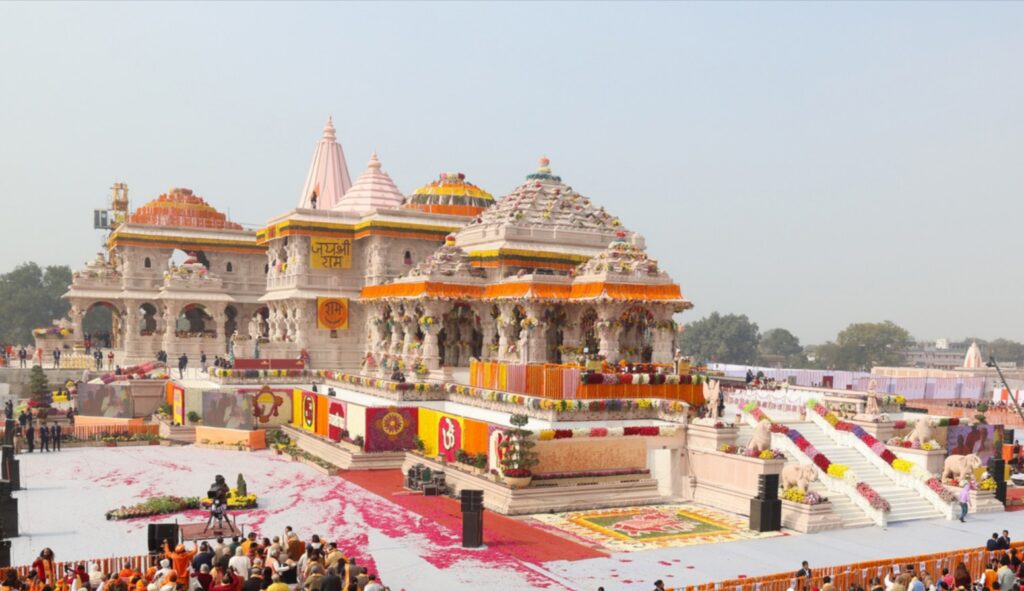rAM TEMPLE :- RISING AYODHYA: LORD RAM'S RETURN AFTER 500 YEARS OF EXILE

After enduring 500 years of exile, the return of Ram to Ayodhya, famously known as Ram Janmabhoomi, carries with it a history steeped in religious discord and political maneuvering. This dark chapter go back to 1528-1529 when the Mughal emperor Babur’s commander, Mir Baqi, callously demolished the sacred birthplace and temple of Ram to make way for the construction of the Babri Masjid Mosque. This deliberate act of destruction is as a stark reminder of the unchecked power of the Mughal rulers and their blatant disregard for the sentiments and heritage of the Hindu population. The razing of Ram’s birthplace was not merely a physical demolition but a symbolic annihilation of cultural identity and religious sanctity.
In 1883, Nirmohi Akhara’s Mahant Raghubir Das emerged as a prominent figure in the contentious history of Ram Janmabhoomi. During this period, structures like the Ram Chabootara and Kausalya Rasoi were erected around the periphery, housing the idol of Lord Ram. The backdrop was marked by simmering tensions, as in 1857, a raised platform near the Babri Masjid led to a dispute, resulting in the construction of a wall to allegedly separate the structures. Undeterred, Mahant Raghubir Das attempted to construct a temple over the platform in 1883, triggering objections from Muslim parties. His efforts were swiftly thwarted by the district magistrate in response to these objections. Subsequently, Raghubir Das filed a suit in the Faizabad Subordinate Court (case no 61/285) claiming ownership of the platform and the right to build upon it. Despite facing denials from the sub judge and district judge, Das persistently pursued his case, escalating it to the court of the judicial commissioner, Oudh.
The struggle gained momentum in 1949 when, mysteriously, a Ram Idol appeared inside the mosque. Hindus saw it as a divine revelation. The government declared the site contested, locking the entrance and intensifying the religious and legal tussle. In 1950, Hindu individuals filed suits seeking permission to conduct pujas, and the court granted them permission while keeping the inner courtyard gates locked. The legal battle escalated in 1959 when Nirmohi Akhara filed a suit seeking possession of the land, followed by a Muslim suit in 1961 by the UP Sunni Wakf Board demanding possession of the mosque site and removal of Ram Idols.
The turning point came in 1984 with the commencement of the Ram Janmbhoomi Movement led by the Vishwa Hindu Parishad (VHP), with Lal Krishna Advani at the forefront. The movement gained momentum, leading to the unlocking of the inner gate of the Babri Mosque in 1986 and the performance of Shilanayas (Statue) in 1989.
